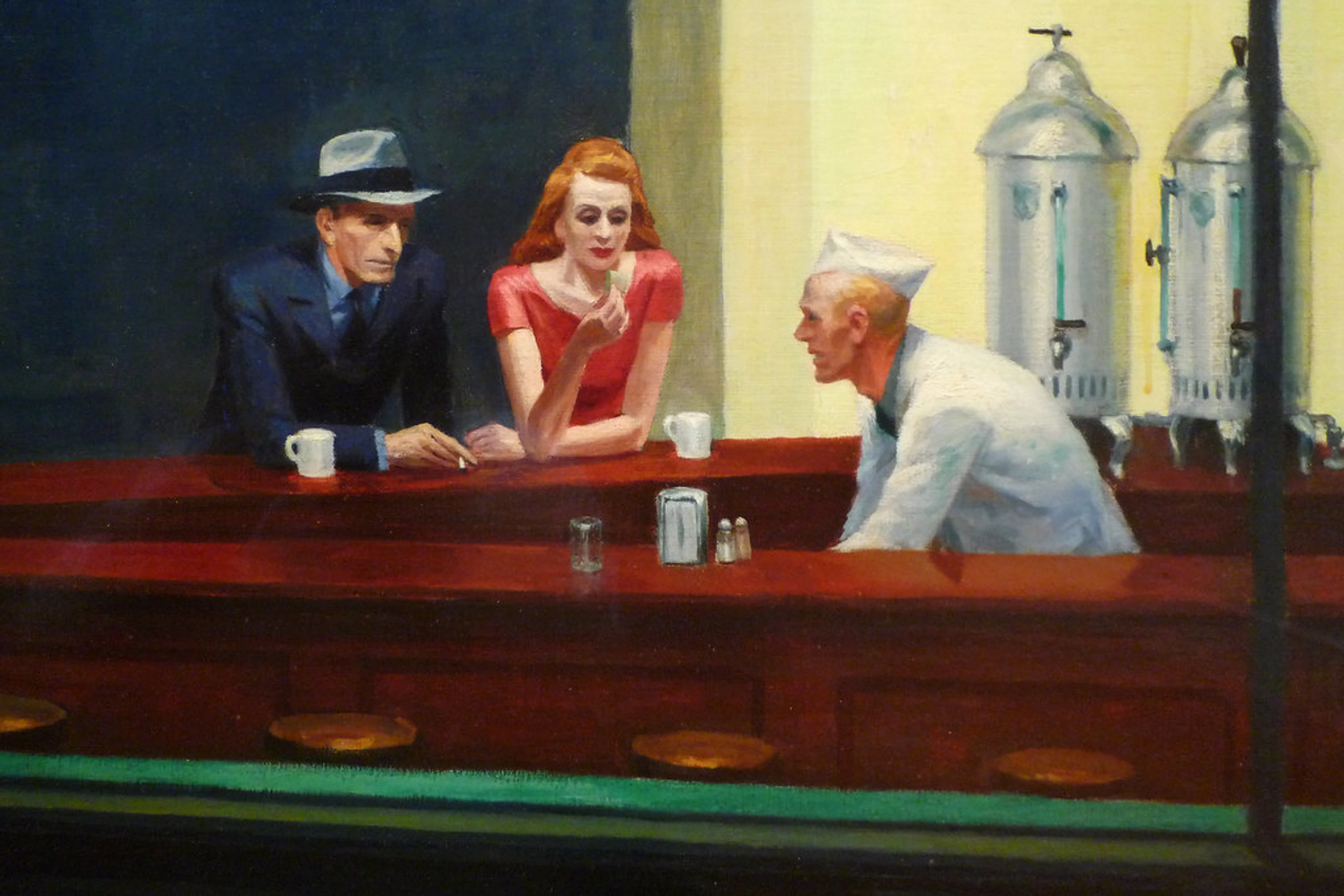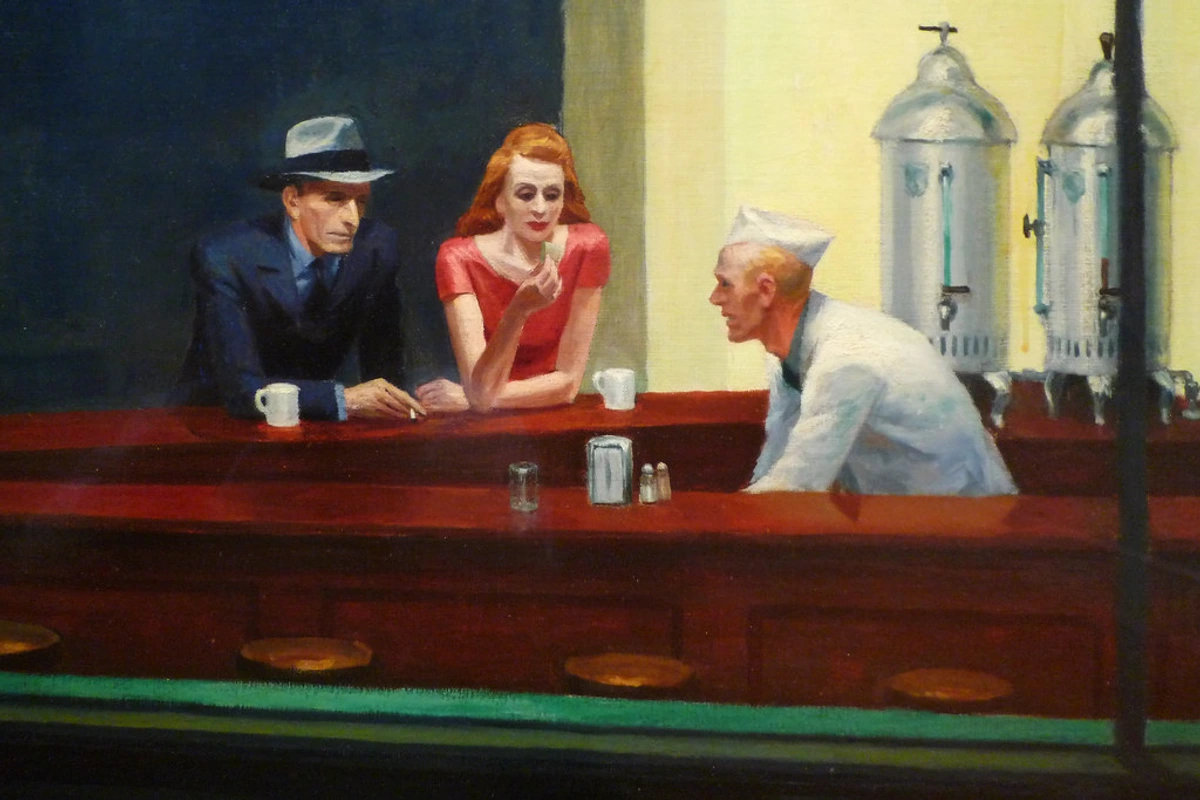
Edward Hopper's Nighthawks: Meaning, Loneliness & Legacy
Unravel the mystery of Hopper's Nighthawks. I dive deep into its symbolism, urban isolation, and cinematic mood, sharing personal insights into this iconic masterpiece.
Edward Hopper's Nighthawks: Meaning, Loneliness & Legacy
The first time I stood before Edward Hopper's 'Nighthawks' at the Art Institute of Chicago, a shiver went down my spine. It wasn't a scary shiver, mind you, but more like the quiet, profound chill of recognition. You know that feeling, right? When a piece of art just gets you, even if you can't quite articulate why? For me, 'Nighthawks' has always felt like a whispered secret about urban life, a poignant meditation on connection, or rather, the lack thereof, in the midst of a bustling world. It's not just a painting; it’s an atmosphere, a question, a memory you might not even know you have.
The Eerie Allure of the Empty City
I mean, just look at it. It’s late. Very late. The city outside is a dark, deserted canvas, and then there's this diner, glowing like an alien beacon on a desolate street corner. Hopper painted this in 1942, right in the thick of World War II, and you can almost feel that undercurrent of anxiety, that sense of the world holding its breath. The street is empty, the buildings across the way are dark, and there's a palpable silence that just screams urban isolation. It's a snapshot, but it feels like an entire narrative compressed into a single frame, doesn't it?

A Symphony of Solitude: Characters and Connection (or Lack Thereof)
My eyes always gravitate to the figures. There are four of them: a couple, a lone man, and the server. And here's the kicker: they're all together, yet utterly alone. The couple sits side-by-side, but their gaze is distant, unengaged. The man with his back to us, perched on a stool, seems lost in his own thoughts. And the server? He's serving, sure, but there's no warmth, no genuine interaction. It's like a tableau of parallel lives. Hopper masterfully uses the diner's counter and the stark contrast of light and shadow to create invisible barriers between them, almost suggesting that despite sharing a physical space, they inhabit entirely separate psychological worlds. It's a brilliant study in understanding balance in art composition, not just visually but emotionally.

The Unseen Exit
One detail that always nags at me, in the best possible way, is the lack of a visible door for the patrons to exit. They seem... contained. Trapped, even, in this glowing box. This isn't accidental; it reinforces that feeling of existential ennui, of being stuck in a moment. It’s a very subtle narrative choice that adds so much weight to the entire scene.
Light, Shadow, and the Theatrical Stage
Hopper was a master of light, wasn't he? And in 'Nighthawks,' he uses it almost like a stage director. The harsh, artificial light from the diner floods the scene, creating dramatic contrasts with the inky blackness outside. It's a far cry from the nuanced play of natural light you might see in a Rembrandt, where chiaroscuro adds depth and a certain earthy drama. Here, the light is cold, revealing, almost surgical. It strips away comfort, exposing the vulnerability of the figures. It’s fascinating to think about how artists use color not just for aesthetic appeal, but as a potent psychological tool, even when that color is primarily the sterile glow of a fluorescent bulb. It creates a mood that's both inviting and unsettling, pulling you in while keeping you at arm's length.
A Cinematic Quality
Many critics have noted the cinematic feel of 'Nighthawks,' and I completely get it. It predates much of classic film noir, yet it perfectly captures that genre's mood: mystery, detachment, a sense of quiet drama unfolding under harsh lights. You can almost hear the soft jazz, the clinking of glasses, the unspoken narratives playing out.
Historical Echoes: Post-War Anxiety and the American Dream
As I mentioned, the painting emerged during a tumultuous time. The world was at war, and America was undergoing massive social and psychological shifts. 'Nighthawks' often gets interpreted as a reflection of the national mood – a sense of quiet desperation, the lingering loneliness despite urban density, and a questioning of the traditional American dream. It’s less about a specific event and more about an underlying existential feeling.
Key Interpretations of Nighthawks
Interpretation | Description |
|---|---|
| Isolation and Urban Alienation | A profound commentary on modernity's impact on the human spirit, especially the sense of disconnectedness. |
| The Unseen Exit / Trapped Existence | The lack of a visible exit reinforces feelings of existential ennui and being stuck in a moment. |
| Artificial Light and Psychological Exposure | The harsh diner light acts like a stage light, exposing vulnerability rather than offering comfort. |
| Cinematic Narrative and Film Noir Parallels | The painting's mood evokes mystery, detachment, and quiet drama, akin to film noir. |
| Post-War Anxiety and the American Dream Questioned | Reflects the national mood of desperation, loneliness, and doubt about the American dream. |
Frequently Asked Questions (FAQ)
What is the primary meaning of Nighthawks?
While interpretations vary, a central theme is urban isolation and the feeling of disconnectedness within modern city life. The painting captures a sense of quiet desperation and loneliness, even when people are physically together.
Why is Nighthawks considered so influential?
Its cinematic quality, masterful use of light and shadow, and its potent evocation of mood and atmosphere have made it a touchstone in art history. It resonates deeply with viewers, offering a timeless commentary on the human condition.
When was Nighthawks painted?
Edward Hopper painted 'Nighthawks' in 1942, during the height of World War II.
Where is Nighthawks displayed?
The painting is permanently displayed at the Art Institute of Chicago.
Does Nighthawks depict a specific place?
While inspired by Greenwich Village in New York City, the scene is not a direct depiction of a real location but rather a composite, an imagined space that enhances its universal themes.
My Personal Take
Interpretation of Isolation and Urban Alienation. My personal reading is that it is a profound commentary on modernity's impact on the human spirit, especially the sense of disconnectedness. | Yes | It definitely feels like Hopper is showing us how we can be together, yet apart. The painting makes me feel a bit melancholic, but also seen. It resonates with my own quiet moments of reflection in a bustling city. |




